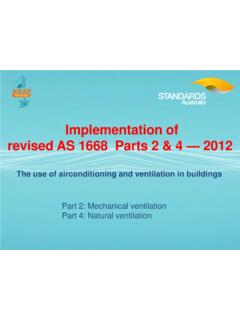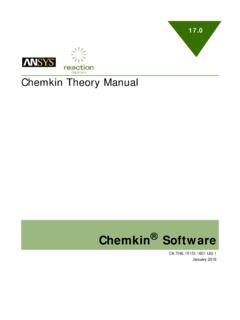Transcription of A Researcher’s Guide to - NASA
1 National Aeronautics and Space AdministrationA Researcher s Guide to:Space Environmental Effects2 This International Space Station (ISS) Researcher s Guide is published by the NASA ISS Program Science : Miria M. Finckenor Kim K. de GrohExecutive Editor: Amelia RaiTechnical Editor: Neesha HoseinDesigner: Cory DukeCover and back cover: a. Astronaut Stephen Robinson retrieves Materials International Space Station Experiment-1 (MISSE-1) during the STS-114 mission, July 2005. Photo was taken during Expedition 6 on the ISS.
2 B. Scanning electron microscopy image of the back-surface of a thin film layer of Kapton H after four years of low-Earth orbit (LEO) ram atomic oxygen erosion while on the exterior of the ISS as part of the MISSE-2 Polymer Erosion and Contamination Experiment (PEACE). c. Scanning electron microscopy image showing the microscopic cone texture that developed after four years of LEO ram atomic oxygen erosion of a pyrolytic graphite sample while on the exterior of the ISS as part of the MISSE-2 PEACE Polymers experiment.
3 3 Close-up view of the Materials International Space Station Experiment (MISSE) 6A and 6B Passive Experiment Containers (PECs) on the European Laboratory/Columbus. Photo was taken during a flyaround of STS-123 Space Shuttle 250 miles above Earth, the ISS is a modern wonder of the world, combining the efforts of 15 countries and thousands of scientists, engineers and technicians. The ISS is a magnificent platform for all kinds of research to improve life on Earth, enable future space exploration and understand the universe.
4 This researcher s Guide is intended to help potential researchers plan experiments that would be exposed to the space environment, while externally attached to or deployed from the ISS. It covers all the pertinent aspects of the space environment, how to best translate ground research to flight results and lessons learned from previous experiments. It also details what power and data are available on the ISS in various external Lab is Open4451. Microgravity, or weightlessness, alters many observable phenomena within the physical and life sciences.
5 Systems and processes affected by microgravity include surface wetting and interfacial tension, multiphase flow and heat transfer , multiphase system dynamics, solidification, and fire phenomena and combustion. Microgravity induces a vast array of changes in organisms ranging from bacteria to humans, including global alterations in gene expression and 3-D aggregation of cells into tissue-like Extreme conditions in the ISS environment include exposure to extreme heat and cold cycling, ultra-vacuum, atomic oxygen, and high energy radiation.
6 Testing and qualification of materials exposed to these extreme conditions have provided data to enable the manufacturing of long-life reliable components used on Earth as well as in the world s most sophisticated satellite and spacecraft Low Earth orbit at 51degrees inclination and at a 90-minute orbit affords ISS a unique vantage point with an altitude of approximately 240 miles (400 kilometers) and an orbital path over 90 percent of the Earth s population. This can provide improved spatial resolution and variable lighting conditions compared to the sun-synchronous orbits of typical Earth remote-sensing Features of the ISS Research Environment51.
7 Microgravity, or weightlessness, alters many observable phenomena within the physical and life sciences. Systems and processes affected by microgravity include surface wetting and interfacial tension, multiphase flow and heat transfer , multiphase system dynamics, solidification, and fire phenomena and combustion. Microgravity induces a vast array of changes in organisms ranging from bacteria to humans, including global alterations in gene expression and 3-D aggregation of cells into tissue-like Extreme conditions in the ISS space environment include exposure to extreme heat and cold cycling, ultra-vacuum, atomic oxygen, and high energy radiation.
8 Testing and qualification of materials exposed to these extreme conditions have provided data to enable the manufacturing of long-life reliable components used on Earth as well as in the world s most sophisticated satellite and spacecraft Low-Earth orbit at 51 degrees inclination and at a 90-minute orbit affords ISS a unique vantage point with an altitude of approximately 240 miles (400 kilometers) and an orbital path over 90 percent of the Earth s population. This can provide improved spatial resolution and variable lighting conditions compared to the sun-synchronous orbits of typical Earth remote-sensing Features of the ISS Research Environment6 Unique Features of the ISS Research Environment 5 Research Priorities for Space Environmental Effects on the ISS 7 Aspects of the Space Environment 10 Vacuum 10 Atomic Oxygen 10 Ultraviolet Radiation
9 12 Particulate or Ionizing Radiation 13P l a s m a 14 Temperature Extremes and Thermal Cycling (Coefficients of Thermal Expansion [CTE] Mismatch) 14 Micrometeoroid/Orbital Debris Impact 15 Orientation and Location on the ISS 17 Approaches to Mitigate Contamination 18 Lessons Learned 20 Plan for Flight Recovery Contingencies 20 Control Samples and Preflight Testing 20 Understand Sample Geometry 21 Other Lessons Learned 22 Developing and Flying Research to the ISS 24 ISS External Accomodations 26 Japanese Experiment Module Exposed Facility [Japan Aerospace]
10 Exploration Agency (JAXA)] 26 Multi-Purpose Experiment Platform (MPEP [JAXA]) 27 JEM Small Satellite Orbital Deployer (J-SSOD [JAXA]) 28 EXPRESS Logistics Carrier (NASA) 28 Columbus External Payload Facility (European Space Agency) 31 Russian Segment External Facilities (Russian Federal Space Agency) 32 Funding Opportunities 33 Citations 34 Acronyms 37 Table of Contents7 Scientists and engineers have developed advanced materials for manned spacecraft and satellites for a range of sophisticated applications in space exploration, transportation, global positioning and communication.












